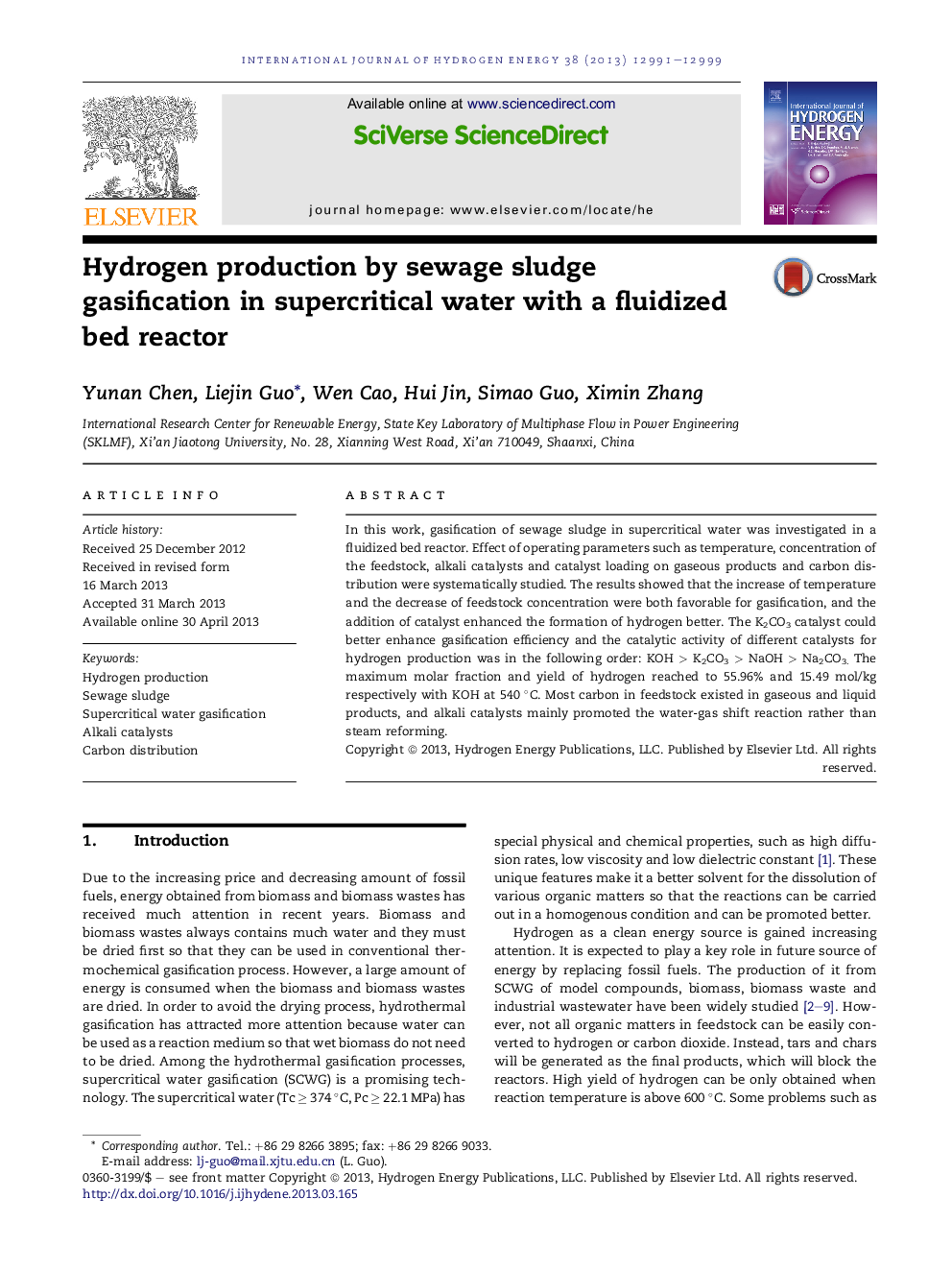| Article ID | Journal | Published Year | Pages | File Type |
|---|---|---|---|---|
| 7721658 | International Journal of Hydrogen Energy | 2013 | 9 Pages |
Abstract
In this work, gasification of sewage sludge in supercritical water was investigated in a fluidized bed reactor. Effect of operating parameters such as temperature, concentration of the feedstock, alkali catalysts and catalyst loading on gaseous products and carbon distribution were systematically studied. The results showed that the increase of temperature and the decrease of feedstock concentration were both favorable for gasification, and the addition of catalyst enhanced the formation of hydrogen better. The K2CO3 catalyst could better enhance gasification efficiency and the catalytic activity of different catalysts for hydrogen production was in the following order: KOH > K2CO3 > NaOH > Na2CO3. The maximum molar fraction and yield of hydrogen reached to 55.96% and 15.49 mol/kg respectively with KOH at 540 °C. Most carbon in feedstock existed in gaseous and liquid products, and alkali catalysts mainly promoted the water-gas shift reaction rather than steam reforming.
Related Topics
Physical Sciences and Engineering
Chemistry
Electrochemistry
Authors
Yunan Chen, Liejin Guo, Wen Cao, Hui Jin, Simao Guo, Ximin Zhang,
